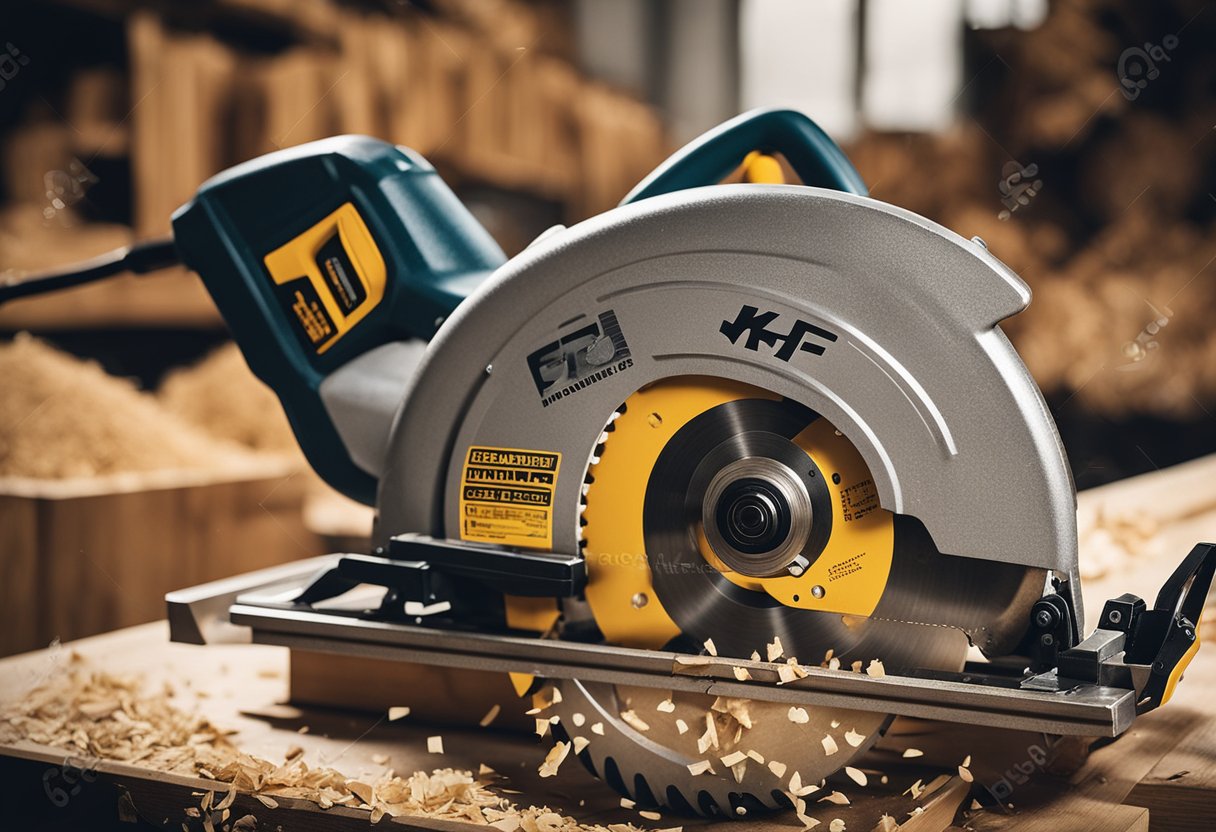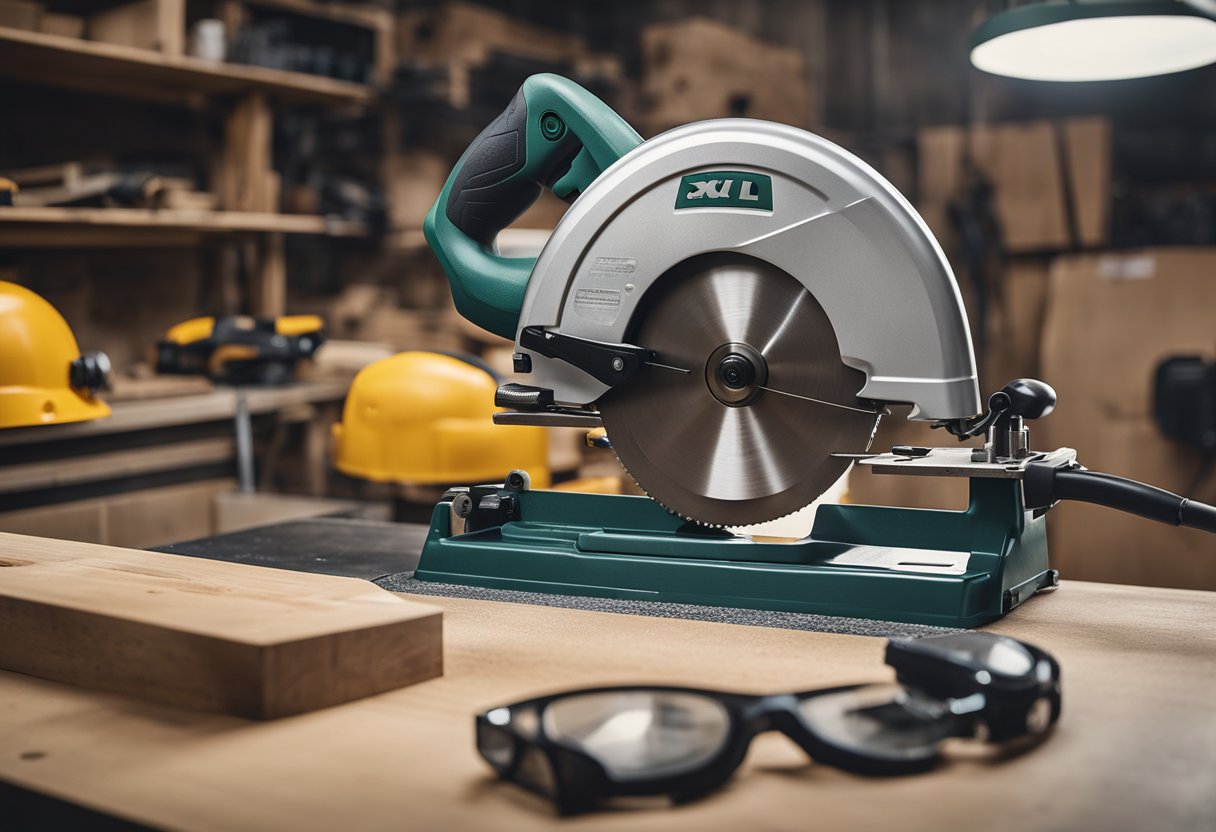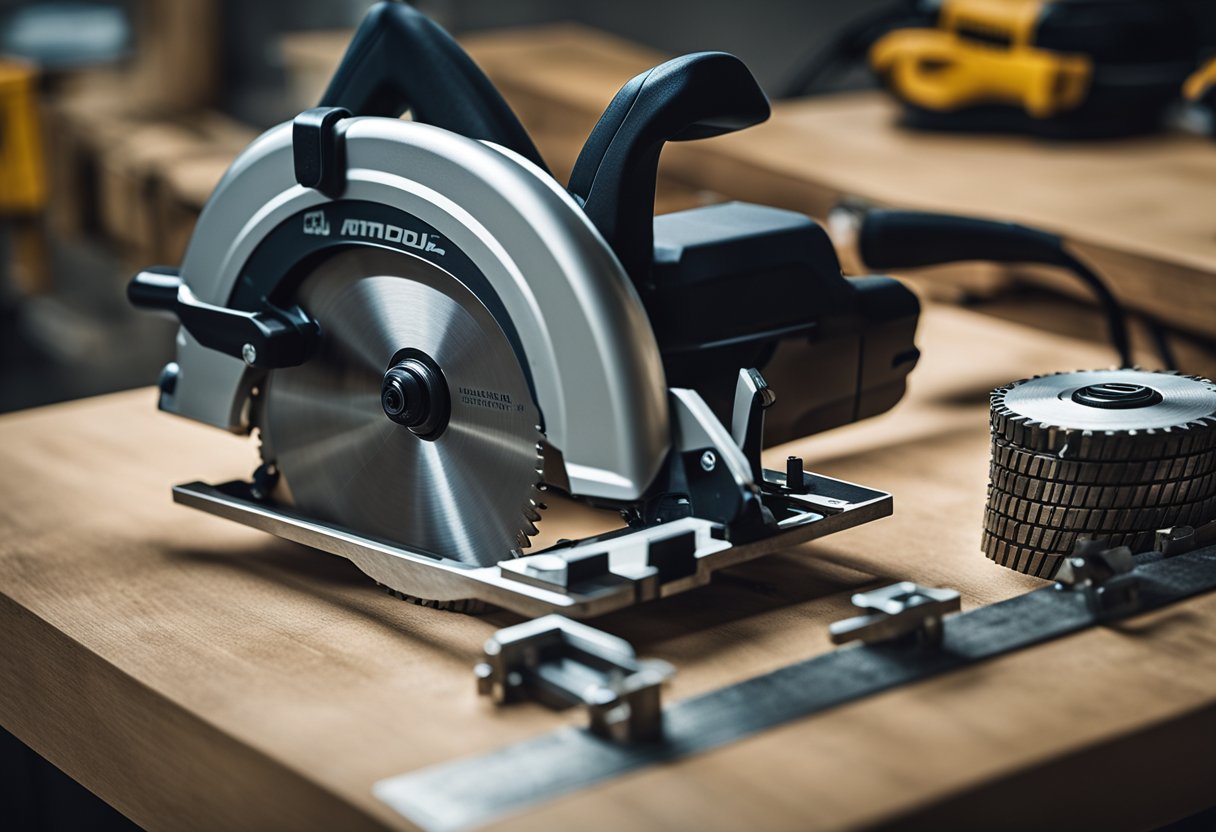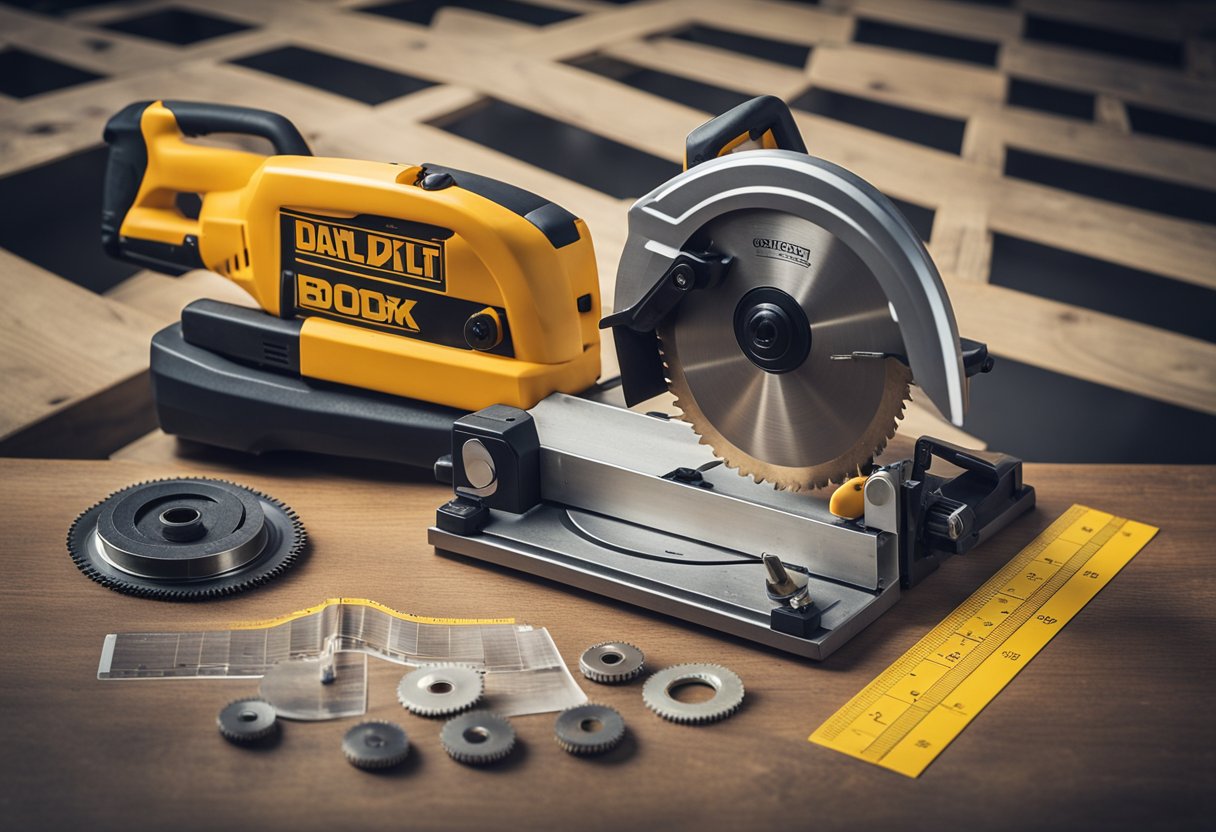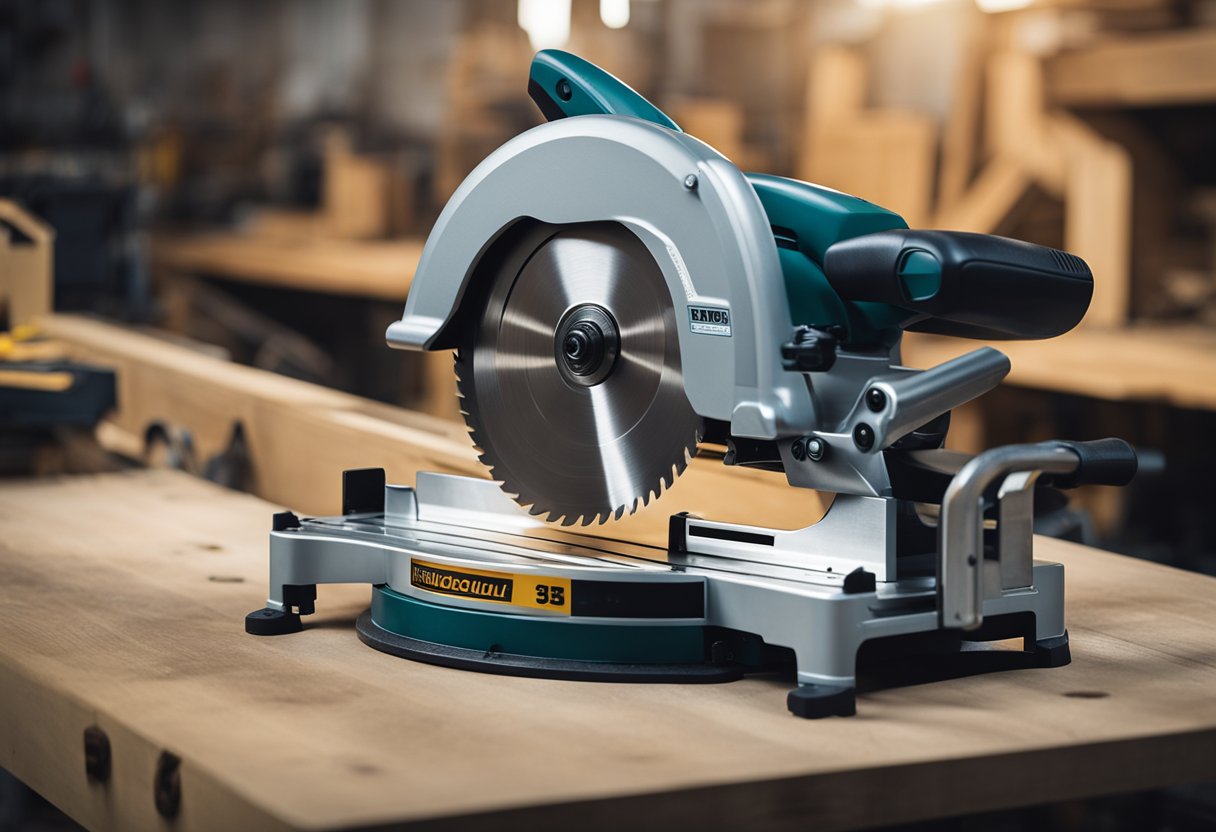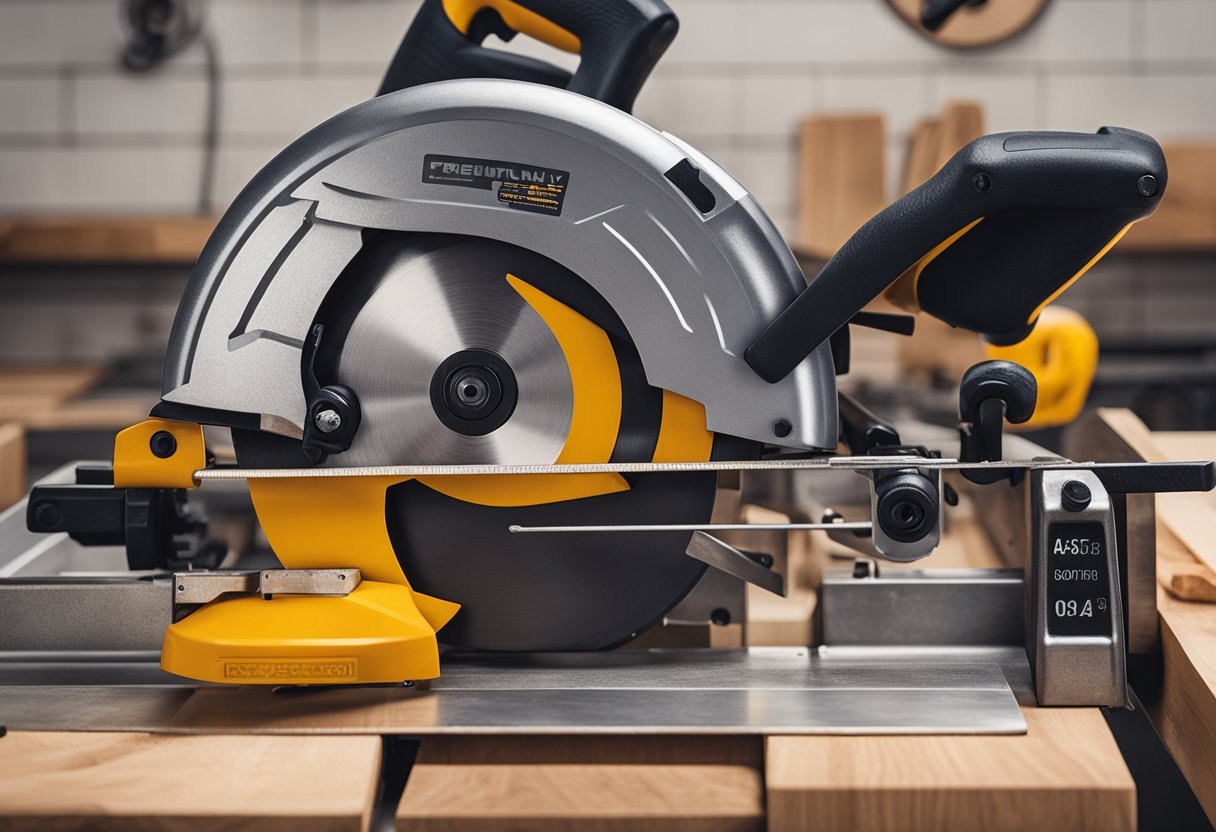Circular saws are versatile and powerful tools that can make quick work of almost any cutting job. They are commonly used in woodworking, construction, and DIY projects. However, with so many different sizes, types, and features available, it can be challenging to choose the right one for your needs. In this article, I will provide an overview of what size circular saw is best for various applications.
Circular saws come in a range of sizes, from small handheld models to large stationary saws. The size of the saw you choose will depend on the type of work you plan to do. For example, if you are cutting small pieces of wood or making precise cuts, a smaller saw with a blade diameter of 6 1/2 inches or less may be suitable. On the other hand, if you are cutting large sheets of plywood or making long rip cuts, a larger saw with a blade diameter of 7 1/4 inches or more may be necessary. Understanding Circular Saws, Power and Motor Considerations, Blade Types and Sizes, Safety Features and Considerations, Cutting Techniques and Adjustments, Additional Features and Accessories, Cost and Value Considerations, Who Should Use a Circular Saw?, Frequently Asked Questions.
Key Takeaways
- Choosing the right size circular saw depends on the type of work you plan to do.
- Smaller saws are suitable for cutting small pieces of wood or making precise cuts, while larger saws are necessary for cutting large sheets of plywood or making long rip cuts.
- Other factors to consider when choosing a circular saw include power and motor considerations, blade types and sizes, safety features, cutting techniques and adjustments, additional features and accessories, and cost and value considerations.
Understanding Circular Saws
https://www.youtube.com/watch?v=bbOIEgsXBU4&embed=true
As a woodworker, choosing the right circular saw is essential to ensure that you get the job done right. Circular saws come in different sizes, shapes, and types, and knowing the differences between them is crucial. In this section, I will explain the basics of circular saws to help you make an informed decision.
Corded vs Cordless
One of the first things to consider when choosing a circular saw is whether to go corded or cordless. Corded circular saws are more powerful and can handle tougher jobs. They are also more reliable since you don’t have to worry about running out of battery power. On the other hand, cordless circular saws offer more mobility and are ideal for jobs that require you to move around a lot. They are also quieter and more lightweight. However, they are less powerful and have a limited battery life.
Sidewinder vs Worm-Drive
Another important consideration is whether to choose a sidewinder or worm-drive circular saw. Sidewinder circular saws are the most common type of circular saws, and they are also the most affordable. They are lightweight and easy to maneuver, making them ideal for beginners. Worm-drive circular saws, on the other hand, are more powerful and have more torque. They are ideal for heavy-duty jobs and can cut through thicker materials. However, they are heavier and more expensive than sidewinder circular saws.
In summary, when choosing a circular saw, consider whether you need a corded or cordless saw and whether a sidewinder or worm-drive saw is more suitable for your needs. With this basic knowledge, you can make an informed decision and choose the right circular saw for your woodworking needs.
Power and Motor Considerations
https://www.youtube.com/watch?v=fMLI-9ZGhsI&embed=true
When it comes to circular saws, power and motor considerations are essential. The power rating of a circular saw is determined by its motor’s amperage. Generally, the higher the amperage, the more powerful the saw is. For instance, a 15-amp saw is considered standard and provides enough power for most cutting tasks. On the other hand, a 10-amp or 12-amp saw is suitable only for infrequent use.
The motor is the heart of the circular saw, and it is responsible for providing raw power to the blade. Electric motors are the most common type of motor used in circular saws, and they are available in various sizes and power ratings. When selecting a circular saw, it is crucial to consider the power source and voltage requirements. Some saws require 120 volts, while others require 240 volts.
A more powerful motor is not always necessary, especially if you are using the saw for light-duty tasks such as cutting plywood or framing lumber. However, if you are using the saw for heavy-duty tasks such as cutting thick hardwoods or making bevel cuts, a more powerful motor will be necessary to ensure smooth, accurate cuts.
In summary, when selecting a circular saw, it is essential to consider the power and motor rating. A 15-amp saw is sufficient for most cutting tasks, but a more powerful motor may be necessary for heavy-duty tasks. Additionally, it is crucial to ensure that the saw’s power source and voltage requirements are compatible with your workshop’s electrical system.
Blade Types and Sizes
https://www.youtube.com/watch?v=wbhD69PT6DY&embed=true
As a circular saw user, I know that choosing the right blade type and size is crucial for getting the job done right. There are different types of blades available on the market, each suited for a specific task. In this section, I will discuss the most common types of circular saw blades and their sizes.
Wood Cutting Blades
Wood cutting blades come in different sizes, ranging from 4 inches to 12 inches in diameter. The blade size you choose will depend on the depth of cut you need to make. For example, a 7-1/4 inch blade is ideal for cutting through 2x4s. If you need to make deeper cuts, you may want to consider a larger blade size.
When choosing a wood cutting blade, you should also consider the number of teeth on the blade. Blades with more teeth provide a smoother cut, while blades with fewer teeth are best for rough cuts. It’s also important to choose a blade with the right tooth configuration. ATB (Alternate Top Bevel) blades are best for crosscuts, while FTG (Flat Top Grind) blades are ideal for ripping.
Metal Cutting Blades
Metal cutting blades are designed to cut through different types of metal, including aluminum, steel, and copper. These blades come in different sizes, ranging from 5-3/8 inches to 14 inches in diameter. The blade size you choose will depend on the thickness of the metal you need to cut.
When choosing a metal cutting blade, you should consider the blade type. Carbide-tipped blades are best for cutting through aluminum and non-ferrous metals, while bi-metal blades are ideal for cutting through steel and other ferrous metals.
Specialty Blades
Specialty blades are designed for specific tasks, such as cutting through plywood, laminates, or plastics. These blades come in different sizes and tooth configurations, depending on the material you need to cut.
When choosing a specialty blade, you should consider the blade type and size. Plywood blades have more teeth and a smaller gullet, which reduces tear-out when cutting through plywood. Laminate blades have a high tooth count and a low hook angle, which prevents chipping when cutting through laminates. Plastics blades have a high tooth count and a special tooth geometry, which prevents melting when cutting through plastics.
In conclusion, choosing the right blade type and size is crucial for getting the job done right. By considering the material you need to cut and the depth of cut you need to make, you can choose the right blade for your circular saw.
Safety Features and Considerations
As a professional woodworker, I know how important it is to prioritize safety when using power tools. Circular saws are no exception. These powerful tools can be dangerous if not used properly, so it’s crucial to understand the safety features and considerations before using them.
One of the most important safety features of a circular saw is the guard. The guard covers the blade and helps prevent accidents by keeping your fingers away from the blade. Always make sure the guard is working properly before using the saw. If the guard is damaged or not functioning correctly, do not use the saw until it is repaired or replaced.
Another safety consideration is kickback. Kickback occurs when the saw blade catches on something and the saw jerks back towards you. This can be dangerous and cause serious injury. To prevent kickback, make sure the blade is sharp and properly aligned. Always hold the saw with both hands and keep your body out of the way of the blade.
Safety should always come first when using a circular saw. Before using the saw, make sure you are wearing proper safety gear, such as safety glasses and ear protection. It’s also a good idea to wear a dust mask to protect your lungs from sawdust.
Electric brakes are another important safety feature to consider. An electric brake can stop the blade quickly, reducing the risk of injury if something goes wrong. If your circular saw does not have an electric brake, be extra cautious when using it.
In summary, a circular saw can be a dangerous tool if not used properly. Always prioritize safety by checking the guard, preventing kickback, wearing proper safety gear, and considering the presence of electric brakes. With these safety features and considerations in mind, you can use a circular saw with confidence and knowledge.
Cutting Techniques and Adjustments
https://www.youtube.com/watch?v=FXd8jYqVVJs&embed=true
As a circular saw user, I know that the cutting technique and adjustments are essential to achieving accurate cuts. Here are some cutting techniques and adjustments that you should be familiar with:
Straight Cuts
Straight cuts are the most common type of cut made with a circular saw. To make a straight cut, you need to adjust the blade depth to the thickness of the material you are cutting. You can adjust the blade depth by loosening the bevel adjustment lever and raising or lowering the blade to the desired depth. Then, make sure to tighten the lever when you’re finished. It is important to keep the saw straight and steady while making the cut. You can use a straight edge or a rip fence to guide the saw and ensure a straight cut.
Bevel Cuts
Bevel cuts are cuts made at an angle other than 90 degrees. To make a bevel cut, you need to adjust the cutting angle of the saw. You can adjust the cutting angle by loosening the bevel adjustment lever and tilting the saw to the desired angle. Then, make sure to tighten the lever when you’re finished. Bevel cuts are commonly used for making angled cuts on trim and molding.
Miter Cuts
Miter cuts are beveled cuts made at an angle across the face of the material being cut. To make a miter cut, you need to adjust the cutting angle of the saw and the bevel angle of the saw. You can adjust the cutting angle and the bevel angle by loosening the bevel adjustment lever and tilting the saw to the desired angle. Then, make sure to tighten the lever when you’re finished. Miter cuts are commonly used for making angled cuts on corners and edges.
When making any type of cut, it is important to use the appropriate blade for the material being cut. Different blades have different cutting power and cutting depth. For example, a blade with a higher tooth count is better for making rip cuts, while a blade with a lower tooth count is better for making beveled cuts.
In conclusion, understanding cutting techniques and adjustments is crucial for achieving accurate cuts with a circular saw. By following these guidelines and using the appropriate blade, you can achieve professional-looking cuts every time.
Additional Features and Accessories
When it comes to circular saws, there are a variety of additional features and accessories that can make your cutting tasks easier and more efficient. Here are some of the most common ones to consider:
Handle
A comfortable and ergonomic handle is essential for any circular saw. A good handle should provide a secure grip and reduce fatigue during extended use. Some circular saws come with a rubberized grip that provides extra comfort and control.
Laser Guide
A laser guide can help you make more accurate cuts by projecting a beam of light onto your workpiece. This can be especially helpful when cutting long or angled pieces of wood. However, keep in mind that a laser guide is not always necessary and may add to the cost of the saw.
Table
A table can provide a stable surface for your circular saw, making it easier to make precise cuts. Some circular saws come with a built-in table, while others require a separate accessory. If you plan on using your saw for larger projects, investing in a table may be worth it.
Work Lights
Work lights can help you see your cutting line more clearly, especially in dimly lit areas. Some circular saws come with built-in work lights, while others require a separate accessory. If you plan on using your saw in low-light conditions, a work light can be a helpful addition.
Dust Blower
A dust blower can help keep your work area clean by blowing sawdust and debris away from your cutting line. Some circular saws come with a built-in dust blower, while others require a separate accessory. If you plan on using your saw frequently, a dust blower can be a useful feature.
In conclusion, when choosing a circular saw, consider which additional features and accessories will be most helpful for your specific needs. While some features may add to the cost of the saw, they can also make your cutting tasks easier and more efficient.
Cost and Value Considerations
When it comes to buying a circular saw, cost and value are important considerations. You want to get the best value for your money without compromising on quality. Here are some factors to consider:
Price Range
Circular saws come in a wide range of prices, from budget-friendly options to high-end models. The price range can vary depending on the brand, size, and features of the saw. It’s important to determine your budget before you start shopping for a circular saw. This will help you narrow down your options and prevent you from overspending.
Features
The features of a circular saw can affect its price. For example, a saw with a laser guide or LED lights may be more expensive than a basic model. However, these features can make it easier to use the saw and improve the accuracy of your cuts. When deciding on the features you want, consider how often you will use the saw and what types of projects you will be working on.
Brand
The brand of a circular saw can also impact its price. Some brands are known for their quality and durability, while others may be less expensive but may not last as long. When choosing a brand, do your research and read reviews from other users to get an idea of the saw’s performance and reliability.
Warranty
A warranty can provide peace of mind and protect your investment. Most circular saws come with a manufacturer’s warranty, which can vary in length and coverage. Some brands may offer extended warranties or additional protection plans for an additional cost. When comparing saws, consider the length and coverage of the warranty and factor this into your decision-making process.
In conclusion, when shopping for a circular saw, it’s important to consider the price range, features, brand, and warranty to get the best value for your money. By doing your research and weighing your options, you can find a saw that meets your needs and fits within your budget.
Who Should Use a Circular Saw?
As a DIY enthusiast, I have found that a circular saw is a must-have tool in my workshop. It is versatile and can be used for various projects, from cutting wood for furniture to making precise cuts for home renovations. However, circular saws are not just for DIYers; they are also essential tools for carpenters, contractors, and anyone who works with wood.
If you are a DIYer, a circular saw is an excellent tool to invest in. It is easy to use and can help you complete a wide range of projects, from building shelves to making a workbench. With a circular saw, you can make straight cuts, angled cuts, and even curved cuts, which makes it a versatile tool for any DIY project.
For carpenters and contractors, a circular saw is an essential tool that can help them complete their work quickly and efficiently. It is ideal for cutting large pieces of wood, such as plywood and panels, and can also be used to make precise cuts for framing and roofing.
Whether you are a DIY enthusiast, a carpenter, or a contractor, a circular saw is a tool that you cannot do without. It is versatile, easy to use, and can help you complete your projects quickly and efficiently. So, if you are looking for a tool that can help you take your woodworking skills to the next level, a circular saw is a great investment.
Frequently Asked Questions
What is the recommended size of circular saw for cutting 4×4 wood?
When cutting 4×4 wood, it is recommended to use a circular saw with a blade size of at least 7 1/4 inches. This size will provide enough depth to cut through the material without any issues.
What are the uses of a 6 1/2 inch circular saw?
A 6 1/2 inch circular saw is a great tool for cutting thinner materials such as plywood or MDF. It is also useful for smaller DIY projects such as cutting baseboards or trim.
Can a 4 1/2 inch circular saw cut through a 2×4?
No, a 4 1/2 inch circular saw cannot cut through a 2×4. This size of saw is typically used for smaller projects and cutting thinner materials. A 2×4 requires a saw with a larger blade size, such as a 7 1/4 inch circular saw.
What are the different circular saw blade sizes in millimeters?
Circular saw blade sizes are often measured in inches, but they can also be measured in millimeters. The most common sizes are 165mm, 185mm, 190mm, 210mm, 235mm, and 305mm.
What are the best circular saws for beginners?
For beginners, a corded circular saw with a blade size of 7 1/4 inches is a good choice. Some popular options include the DeWalt DWE575SB, the Makita 5007MGA, and the SKILSAW SPT67WL-01.
What materials can a 5 3/8 inch circular saw cut through?
A 5 3/8 inch circular saw is typically used for cutting thinner materials such as plywood, MDF, or particleboard. It can also be used for smaller DIY projects such as cutting baseboards or trim. However, it may struggle with cutting through thicker materials such as hardwoods or 2x4s.

Hi, I’m Sal Muller of Tooltrip.com. My DIY experience led me to understand essential power tools for home projects. Tooltrip.com guides enthusiasts and professionals in choosing right tools for any job. I provide concise top tool reviews for easier, efficient DIY.

